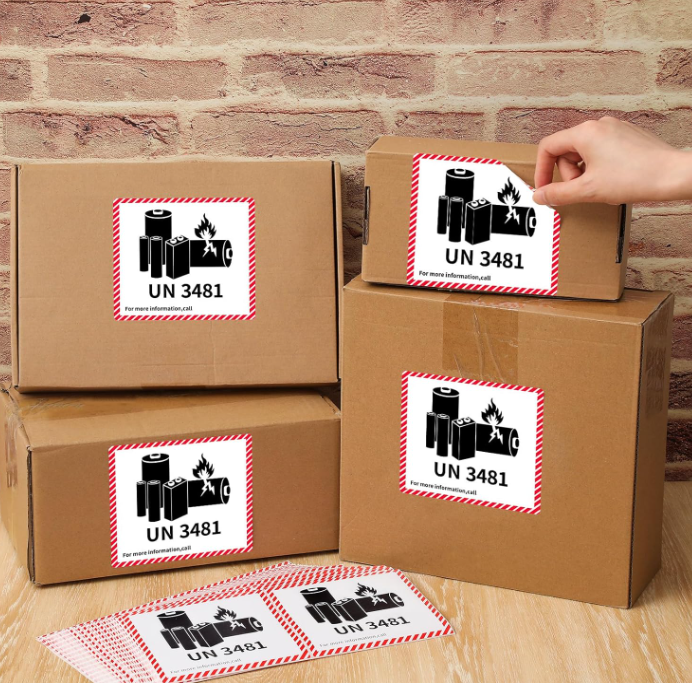The Necessity and Function of Hazmat Labels
In today’s world of global trade and high-frequency logistics, safety is everyone’s concern.In modern global commerce, the transport of hazardous materials (Hazmat) is no longer limited to chemical companies.From lithium batteries, perfumes, and disinfectants to aerosol sprays, many everyday products fall under the “hazardous materials” category.
When packaging or labeling fails to comply with regulations, the consequences go far beyond operational inconvenience — shipments can be delayed, returned, or even fined, damaging not only logistics efficiency but also a brand’s reputation and consumer trust.
For brands and packaging decision-makers, the hazmat label is more than just a label; it represents a company's commitment to safety and compliance. As a global provider of transportation and packaging solutions, MTPAK understands the importance of details. A compliant hazardous materials labeling system ensures a brand's recognition, trust, and access within the global transportation system.
What is a hazmat label, and why is it so critical?
A hazmat label is a mandatory visual identifier used in global transport systems to classify, recognize, and warn about hazardous goods.
It determines whether a shipment can be loaded onto an aircraft, vessel, or truck — and directly impacts insurance claims, transport safety, and regulatory inspections.Each label combines symbols, color codes, hazard class numbers, and text descriptions, forming a universal visual language:
Red signifies flammable materials — a warning of combustion or explosion.
Yellow indicates oxidizers — substances that may intensify combustion.
Black and white stripes mark toxic or corrosive materials.
This isn’t merely color coding — it’s a global communication system for risk.Across complex international supply chains, hazmat labels ensure that regulators, carriers, warehouse operators, and even end recipients can instantly “read the danger”and respond accordingly.
How is the regulatory framework for hazmat labels built?
A single authority does not govern hazmat labeling regulations, but rather an interconnected global compliance network spanning air, sea, road, and multimodal transport. It acts as an invisible safety net, safeguarding the journey from storage to delivery.
The core standards come from:
l UN Model Regulations on the Transport of Dangerous Goods — the foundation for global classification and labeling.
l ICAO & IATA DGR (Air Transport) — rules governing label formats and durability requirements in air cargo.
l IMDG Code (Sea Transport) — ensuring clear identification of flammable or corrosive materials at sea.
l DOT (U.S.) and ADR (Europe) — setting requirements for land transport and cross-border movement.
Each mode of transport requires different compliance details:
Air freight demands labels that withstand low temperatures and humidity.
Maritime shipping requires resistance to salt corrosion and UV exposure.
For global brands, this means that a hazmat label is not just an element of print, but a strategic compliance decision — one that determines whether your products can cross borders smoothly, maintain insurance coverage, and remain legally compliant within global supply chains.
What are the packaging solutions for hazmat labels?
Within hazardous goods packaging systems, Hazmat Labels serve as the vital link between compliance and safety.
They must remain clear and legible under extreme transport conditions, while integrating seamlessly with packaging materials, print technology, and logistics operations.
A robust hazmat label packaging solution typically includes:
1. Material Adaptation – Ensuring labels protect as the package protects
Different packaging types — metal drums, composite bags, plastic containers, or corrugated boxes — require durable label substrates such as PET, BOPP, or chemical-resistant coated paper.
These materials resist oil, moisture, salt spray, and chemical exposure, ensuring labels stay intact and legible throughout transit.
2. Printing & Identification Optimization – Balancing compliance and brand identity
Using high-contrast inks and UV-curing technology guarantees clear visibility under diverse lighting conditions.
Through customized graphic design, brands can harmonize regulatory symbols with their visual identity — achieving both compliance and aesthetic coherence.
3. Application & Sealing Systems – Maintaining consistency and precision
Label placement, orientation, and quantity must align with transport regulations (IATA, IMDG, ADR).
Integrating automated labeling verification systems or manual QC protocols ensures every package leaving the factory is fully compliant.
4. Durability Testing & Traceability – Providing measurable compliance assurance
Premium suppliers perform salt spray, weathering, and abrasion tests to verify label endurance.
QR codes or batch identifiers enable end-to-end traceability, helping brands locate accountability and manage risk swiftly during incidents.
Conclusion
In the global supply chain, packaging is not only protection — it’s communication of responsibility and professionalism. As a seemingly small detail, hazmat labels now define how brands balance safety, compliance, and credibility in international markets.
Choosing MTPAK means choosing a partner that understands regulations, materials, and brand integrity. With every product you ship, from packaging to labeling, your brand remains safe, visible, and trusted worldwide.
Email:account@mtpak.com
Contact us:https://mtpak.com/contact-mtpak




